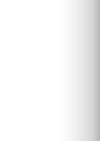


Karimian M, Beyraghdar Kashkooli O, Modarres R, Pourmanafi S. Reconstruction of MODIS chlorophyll a products using DINEOF algorithm in R software: A case study of the Persian Gulf and Oman Sea. JFST 2022; 11 (2) : 3
URL:
http://jfst.modares.ac.ir/article-6-56164-en.html
1- Department of Natural Resources, Isfahan University of Technology
2- Department of Natural Resources, Isfahan University of Technology , omid.beyraghdar@iut.ac.ir
Abstract: (2153 Views)
The DINEOF algorithm is a parameter free technique based on iterative EOF analysis that is used to calculate the missing data in a given satellite data set (without requiring any prior information). In this study, the DINEOF technique has been used to fill the gaps in chlorophyll-a data series in the Persian Gulf and Oman Sea. Level 3 data (4 km spatial resolution) of chlorophyll-a concentration obtained from MODIS sensor (2003- 2020) for the study area were used. In some of the images several gaps were found in different months of the year. Images with gap in the Persian Gulf and Oman Sea were reconstructed by rtsa.gapfill R-package and DINEOF algorithm in R software. The linear regression analysis was performed between the missing and reconstructed data, and also parameters such as RMSE, MSE, MAD and SNR were calculated to evaluate the validity and performance of the DINEOF algorithm. The maximum number of the gaps in data series were found in July. Hence, the images of July have been examined and reconstructed as the case study. The original maps of chlorophyll-a concentration showed that the maximum number of the gaps were in July 2009 and 2015. Evaluation of the results showed a high accuracy of DINEOF-reconstruction method (e.g. in July 2014, R2 = 0.83, RSME = 0.34, MAD = 0.14, MSE = 0.10). The results showed that the implementation of the DINEOF algorithm (in R) to reconstruct the gaps in chlorophyll-a concentration images could serve as a rapid and efficient technique.
Article number: 3
Article Type:
Original Research |
Subject:
Fisheries Oceanography Received: 2021/10/8 | Published: 2022/06/28
Send email to the article author
























































